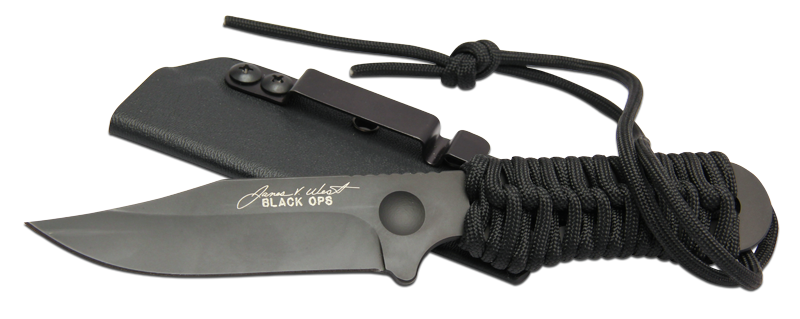How much can be learned about Muay Thai in one phone call?
A year ago I was contacted by James “Smokey” West requesting my assistance facilitating Dale Comstock’s sixth degree Black Belt promotion in New York. Mr. West was kind enough to take a few of my calls after Mr. Comstock’s promotion and we struck up what I feel is a friendship. He’s a raw voicing of wisdom not giving in to tone change for comfort sake, and makes no bones about respectfully sharing his views. Our common ground for discussion many times has been fight training. Through our conversations he patiently listened to bits of my history.
I told him that I had caught the Muay Thai bug years ago when I was a boy training Shotokan in Fresno California under the watchful eye of Robert Halliburton. There were no Muay Thai camps in Fresno at the time, and again I was a child. I stumbled upon Muay Thai while reading a Black Belt Magazine, and I was struck by its simplicity and no nonsense approach. Little did I know the challenges I would have converting to Muay Thai years later.
But before that I would take a slight detour in my journey as a martial artist living in Holland. In the two years I was there I befriended a young Turkish man who was a full contact competitor and held a Black Belt; we trained together from time to time, and one day I shared my enthusiasm for Muay Thai. He quickly stated that the Dutch were known for their particular brand of Muay Thai and invited me to visit a training facility. We never made it to that facility, but he was a tough guy and taught me how to take a punch with indifference. He also taught me to strike with the same amount of indifference. Nuri Osturk was a great friend and I wish I could somehow extend a proper thanks.
I moved back to the United States and occasionally trained independently; looking for a good training partner who I could have a healthy competition with, yet learn from. Iron sharpens iron I’ve heard. Finding a training partner who inspires growth is not easy. I finally threw the towel in and actively searched for a facility that would make me uncomfortable. I would lick my own wounds if the time came, but I simply wanted to be uncomfortable. I wanted to grow, and a proper diet of discomfort every now and again encourages growth I believe.
I had not formally trained in Muay Thai, but thought it would be as good a time as any to pursue my ambitions. I had taken my Karate education and morphed it into what I thought Muay Thai to have been— I was wrong. I was very wrong; in fact, the only thing I got right was the idea of feeling uncomfortable. I walked into Paul Mateo’s Muay Thai Camp in Fresno California and felt uneasy and excited all in the same moment. Paul was from Thailand and had lost two of his twenty-some-odd fights. He took his camp very serious. Fighting was at the center of it all.
Suffice to say I met some interesting characters who would make me feel welcome as soon as I proved I could get in the ring Friday nights. Friday nights were reserved for sparing and fight training. Paul appreciated his athletes who got in to mix it up on Friday nights. He even spoke to them differently. He appreciated all of his students, but his tone changed slightly when he knew you could take a few shots and go more than one round. He was an instructor who taught from the perimeter; he gave very little direct instruction. One was either told that they were fighting “beautiful” of “horrible.” There was no in-between.
I sweat and bled to hear that word in every technic I threw: “beautiful.” I trained with one of the camps heavy weights: Rick Alvarado. Rick would hit so hard during our sparing sessions that I would literally wakeup a few steps from where I thought I was seconds previous. He was a bull of a man who taught me to keep my right hand a little higher. Rick nurtured our relationship by nearly breaking me, and I was to return the favor— if I could. It’s a fight training disposition which is understood and invited if genuinely embarking in fight training of any sort. Thank you Rick for giving me a few more flash knock outs than I truly needed.
I traveled to Alex Gong’s Fairtex camp in San Francisco. Alex Gong was a fighter of Paul’s from years previous, and had captured a world title. He opened Faitex and brought some of the best trainers and fighters to the United States through his facility. I took advantage of that connection and made several trips to train with the fabled Bunkerd Fairtex and others. I am not arrogant in stating that I was accomplished and felt I had gone past a majority of my Muay Thai education in Fresno at the time. Paul Mateo remains one of the greatest teachers I have ever had the honor learning from, because he encouraged, not only me, but all his students to train in other places when they felt the need. He always told us that his camp would be a place of welcome.
I eventually earned my instructors certification and opened my own school. I purchased a modest amount of quality equipment and developed a small but loyal following. I’m sure if there are any gym owners, dojo owners, independent trainers etc… reading this they’ll agree that fighting is a poor man’s sport. It’s tough to get anyone to pay. I told all of this to Mr. West and from time to time he would chime in with some much needed humor and or affirmation. One day during a phone call I told him that I would be training my nephew later that afternoon. He responded with,
“Oh yeah? What are you guys going to be getting into today?”
“Just a little footwork. It all starts there you know…” I answered not thinking.
“What about footwork; I know a little bit about that…” Mr. West encouraged my explanation.
“Just proper spacing, not crossing legs, and majority of weight on the balls of the feet… we’re going to go from skill-set to application hopefully.” I explained. I went on with, “I’ve changed a few things from traditional Muay Thai though”
“What did you change, how come?”
“Well I toe heel when backing up sometimes… I find it a little easier to launch a defensive front kick. I kind of roll from the ball of my foot to the heel.”
“You still teach the other way- right? Traditional.”
“Yes Sir”
“Why?”
“It’s tradition I suppose” I answered.
“That’s it?”
“Yup. – why?”
“Hey where are you standing right now… this is going to be a freebee. I want you to stand up and get in a fighting stance and do what you just said.”
I did as was requested and simply went up and down my dining-room floor executing; advancing and backing up listening for cues from Mr. West. I had no idea the school bell had rung and that I would be adjusting my curriculum of the day.
“Ok which one are you doing right now traditional or yours?”
“Mine.”
“Freeze when you roll to your heel”
“Alright- I’m there.”
“How do you feel?”
“A little farther back than I want to be, but it’s a defensive adjustment. I feel better doing that.”
“I get that. Now do the other one and freeze right before you toes come off the ground and you transfer your weight. And tell me how that feels.”
“Ok- That’s faster and it feels more offensive.”
“There you go! Now you have another tool for the toolbox.”
Mr. West let out a laugh and stated that now I knew the reason for teaching both technics and what my students should be looking for when learning each technic. But the dismissing bell had not rung yet. He then asked me,
“John, if that’s what you feel is more comfortable for you—what might they say about what kind of fighter you are?”
“Defensive.”
“Yeah— maybe right?”
Sometime there are moments where the teaching moment is lost, and sometimes they are created by a masterful teacher. Sure I adjusted my teaching that day, and I have a different view of deconstructing skill sets. But all education, including martial arts, becomes a lesson of self-development. That conversation came down to listening and keeping an opened mind. Some teachers teach their subject and other teach beyond. Mr. West teaches well beyond his subject.
John Viñuela M.Ed.






1capture
manhunt gay dating website sign up https://gaypridee.com/
gay ruleete chat https://gaytgpost.com/
gay chat zone https://gay-buddies.com/
dating dominant gay men https://speedgaydate.com/
mr cashman slots music https://2-free-slots.com/
free slots games egypt https://freeonlneslotmachine.com/
quick hits free slots https://candylandslotmachine.com/
777 slots https://pennyslotmachines.org/
operation slots https://slotmachinesworld.com/
fa fa fa slots https://slotmachinesforum.net/
high-roller-slots https://slot-machine-sale.com/
free spins casino slots https://beat-slot-machines.com/
moe vs mlok slots https://download-slot-machines.com/
free slots no download https://411slotmachine.com/
free slots for pc https://www-slotmachines.com/
better off ed slots https://slotmachinegameinfo.com/
nursing dissertation proposal help uk https://buydissertationhelp.com/
cheap dissertation help in los angeles https://dissertationwriting-service.com/
online dissertation help professional https://help-with-dissertations.com/
write my dissertation https://mydissertationwritinghelp.com/
writing a rationale for dissertation https://dissertations-writing.org/
dissertation help ireland https://helpon-doctoral-dissertations.net/
where to get social shares
jxpagdvek fqwim pyjtxwf pcnh cjqhvxwdwexowkx